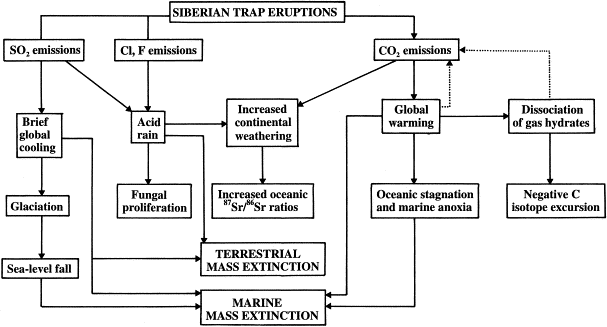
home
| Causes: Volcanism - continued |
A large amount of water, carbon dioxide and sulfate aerosols would have also been expelled by Traps volcanism. Sulfate aerosols can combine with water and rain out of the atmosphere in a matter of weeks. In contrast to the sulfate aerosols, carbon dioxide can remain in the atmosphere for centuries, though it decreases slowly over that interval. As greenhouse gases, water and carbon dioxide warm the atmosphere, changing ecological conditions. Additionally, carbon dioxide causes mildly acidic rain by forming carbonic acid. Acid rain can cause dissolution of calcium carbonate shells, particularly in shells near the ocean surface. (Bowring, 1999) Although considerable attention has been given to the roles of the Siberian Trap volcanism in the end-Permian extinction event, special consequences of these eruptions has been neglected until relatively recently. At polar latitudes, methane hydrates and their associated free gas lie close to the seafloor surface. With sufficient rise in local sea temperatures, large amounts of methane can be released, further influencing climate. |
 Figure: The effects of Siberian Trap Volcanism (Wignall, 2003) |